Legal Notices
Introduction
Transdev Dublin Light Rail Ltd – Transdev – operates and maintains Dublin’s Luas network. We have a long-standing commitment to having a fair and transparent remuneration structure. More than half of our employees are paid on the basis of collectively-agreed pay-scales that provide significant progression with ongoing service to the company.
We are committed to paying equal pay for equal work and to providing a workplace that is a supportive and attractive place to work for people of all genders.
This is our gender pay gap report for the period of 12 months to the end of June 2023.
Our pay gap and the reasons for it
As is common among business that operate in the transport and engineering sectors, our workforce is predominantly male. This difference is particularly pronounced in the higher-earning roles in our business. This, in turn, has led to a mean gender pay gap of 13%. This is close to the national average pay gap (which is 13.7%, according to the Chartered Institute of Personnel and Development) but is a figure that we are committed to reducing. Our median gender pay gap is 20%, a figure we are also committed to reducing.
Background
90% of our employees are male. Only 10% are female. The overwhelming majority of our employees are full-time and permanent. The relatively small proportion of female employees – and the very small number of part-time and temporary employees – means that statistics relating to salaries can be significantly influenced by small numbers of individuals in each category, so the figures in this report need to be read with caution.
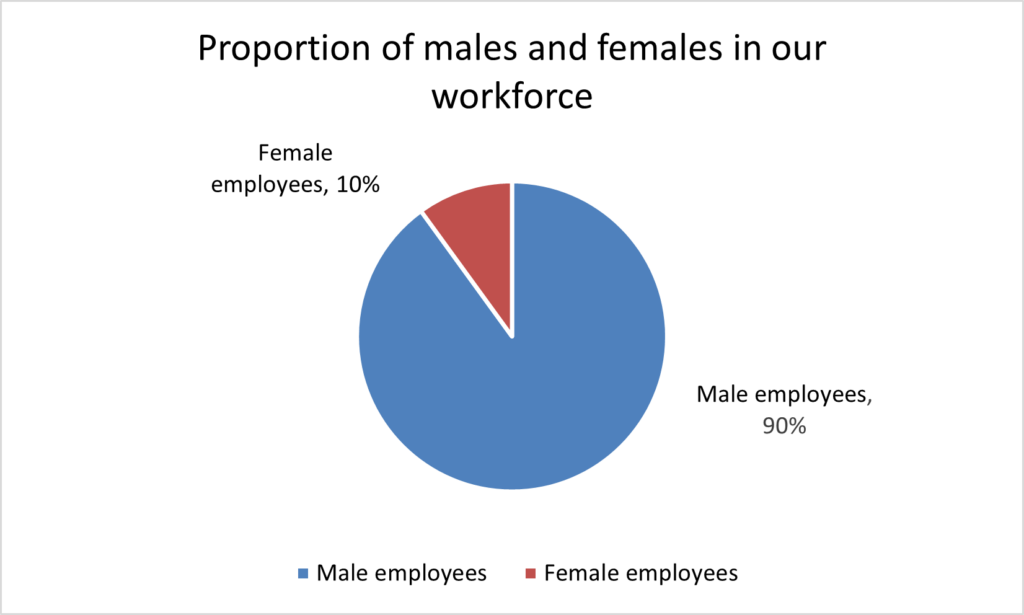
What does the jargon mean?
This report uses the expressions “mean” and “median” when referring to the gender pay gap. These expressions are different ways of capturing a gender pay gap.
The mean gender pay gap is the difference between the average hourly remuneration of male employees and the average hourly remuneration of female employees.
The median gender pay gap is determined by assembling lists of the average hourly remuneration of all the individual males and females in the organisation and determining the difference between
- the remuneration of the female who is in the middle of the female list; and
- the remuneration of the male who is in the middle of the male list.
When discussing both mean and median numbers in any category:
- a positive number means that male employees’ remuneration is higher;
- a negative number means that female employees’ remuneration is higher.
This report includes details of the gender composition of earning quartiles. Each quartile is a quarter of the total workforce – 25% (or as close as possible to 25%) in each of the following four categories.
- The “lower quartile” is the 25% of the workforce with the lowest hourly pay.
- The “lower middle quartile” is the 25% of the workforce with the second-lowest hourly pay.
- The “upper middle quartile” is the 25% of the workforce with the second-highest hourly pay.
- The “upper quartile” is the 25% of the workforce with the highest hourly pay.
The difference between gender pay gap and equal pay
Transdev provides equal pay for equal work. The existence of a gender pay gap does not mean that people are paid differently for doing the same or similar work. One of the purposes of gender pay gap reporting is to put a spotlight on concentrations of males and females in different types of roles, where pay is difference because responsibilities are different.
The gender pay gap in our business

The mean gender pay gap in average hourly remuneration is 13% and the median gender pay gap in average hourly remuneration is 20%.
The mean gender pay gap in bonus payments is 15% whereas the median gender pay gap in bonus is 22%.
Part-time and temporary employees
The following figures should be considered in light of the fact that only very small numbers of Transdev employees are on part-time and temporary contracts.

Breaking the figures down: the quartiles
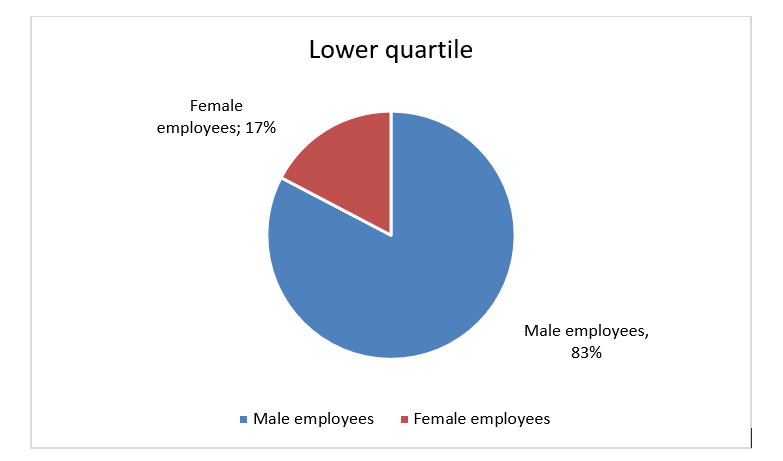
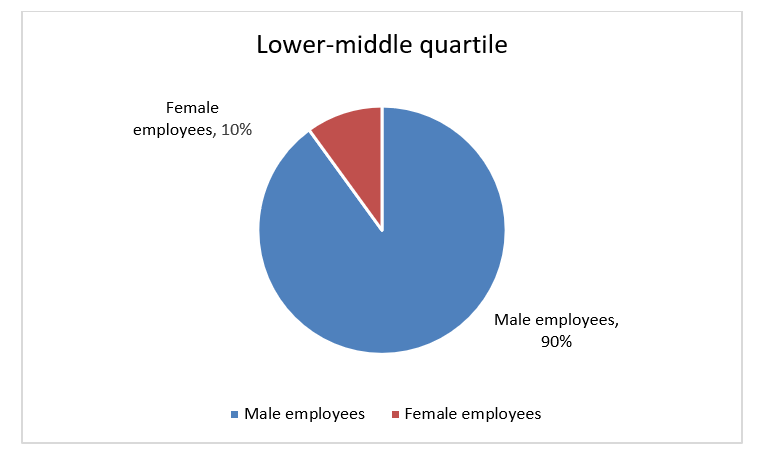
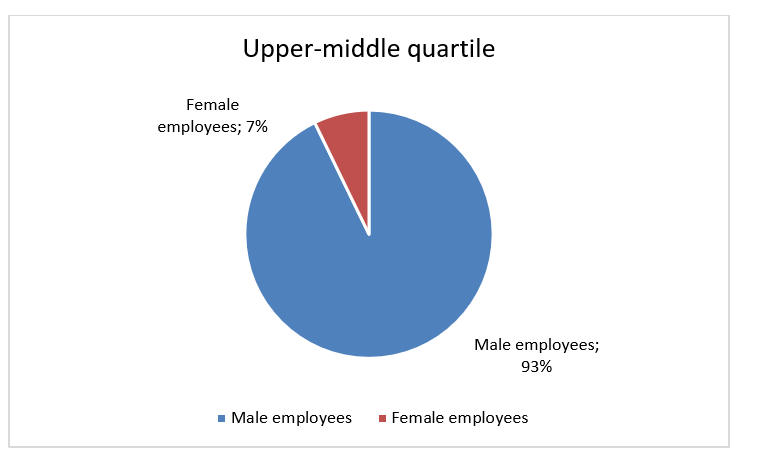
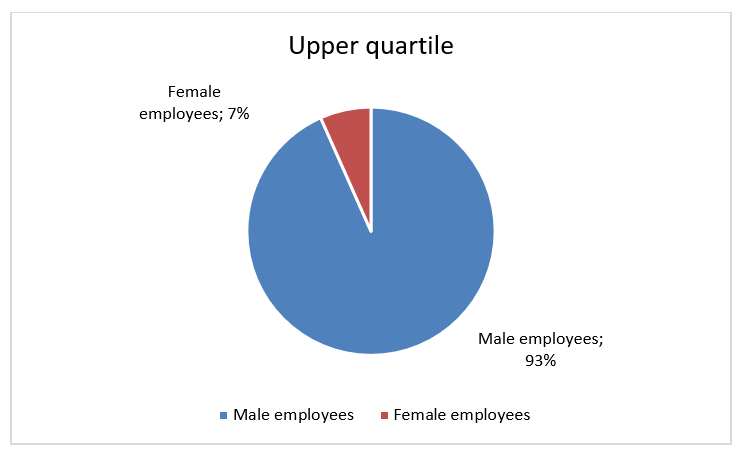
Who receives bonus payments and benefits-in-kind?
- 54% of male employees received a bonus. 46% did not.
- 57% of female employees received a bonus. 43% did not.
A significant factor in respect of our bonus structures is that our current business is made of what (in the past) were two separate businesses. The part of the business that historically operated the Luas network included many roles in which bonus was payable. The part of the business that maintained that network included comparatively few roles in which bonus was payable.
- 27% of male employees received benefits-in-kind. 73% did not.
- 20% of female employees received benefits-in-kind. 80% did not.
Tackling the reasons for the gender pay gap
A significant part of the reasons for the gender pay gap in Transdev are outside of our control. These include the fact that a smaller proportion of females tend to study and qualify in the fields that (in Transdev) are among the highest paid jobs, including engineering and related fields. A proportion of the gender pay gap in our business can only be addressed by way of increasing the number of girls who study science, technology, engineering and maths subjects in schools, and who go into careers related to those fields of study.
However, some aspects are within our control. We are committed to addressing those aspects of the gender pay gap that we can control.
For example, we have in recent times launched recruitment campaigns to encourage female applications for Luas driver roles. We plan to repeat such campaigns regularly. Drivers make up a significant proportion of our workforce. Luas driving is well-paid job with strong incremental pay progression. As more women join the ranks of drivers – and move up the pay scales – gender pay gaps are likely to decrease.
We are also focussed on making all the parts of our business a more attractive place for women to work in. For example, we are reviewing our rosters with a view to introducing family-friendly working hours. In these and in other respects we are committed to reducing the gender pay gap significantly.
